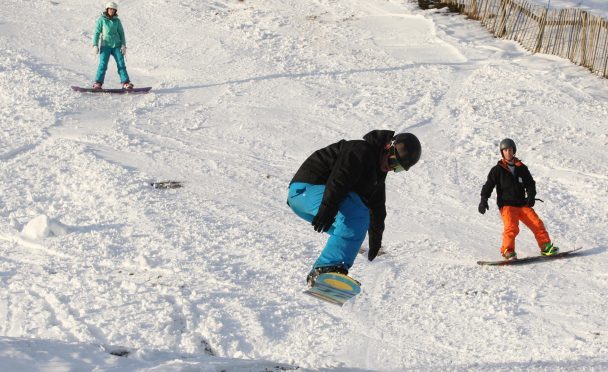Hundreds of festive skiers, boarders and sledgers took to the slopes at three of the country’s five winter sports resorts yesterday.
In what was one of the earliest starts to the season, CairnGorm Mountain near Aviemore, and The Lecht in Aberdeenshire, welcomed a limited number of enthusiasts in November.
But warming temperatures and strong winds called an early halt to the fun on the slopes.
Yesterday both were open again – with CairnGorm having three runs available and The Lecht five.
But CairnGorm – where last season ended on May 8 – suspended snowsport ticket sales at 10am as it reached a safe capacity for the terrain available.
Glencoe had one beginner’s run open and attracted 100 skiers early on.
A spokeswoman for Glencoe said: “We had 200 sledgers on Tuesday so we thought we would open the beginner’s run. The other runs are complete but the links to them are broken. What we need is one really good dump of snow, but who knows when that is coming? The forecasts do not seem very accurate at the moment.”
At The Lecht, the runs were described as “thin and narrow” which were to soften up throughout the day.
The conditions were still not right yet for skiers and boarders to hit the slopes at Scotland’s two other winter sports centres, Glenshee and Nevis Range.
However sledging has been taking place.
Despite the numbers using Scotland’s ski resorts going downhill last winter – with nearly 23,000 fewer hitting the slopes – the sport still generated £21million for the rural economy.
Across the five resorts, the number of skier days was 207,770 compared to 230,634 for the previous winter and 235,191 in 2013/14.
There was only one resort reporting an increase in skiers and boarders last season.
Glenshee in Aberdeenshire managed 59,126 – just over 600 more than last year on just 60 days skiing.
Last season did not start until mid-January, as opposed to the previous winter, when the first ski areas were open by mid-December.
The five mountain ski areas operated for a total of 404 days during the 2016 season, whereas the previous two winters allowed operations on 463 and 441 days respectively. Although fewer days were lost to storm conditions last year, the late start did have a significant impact.
